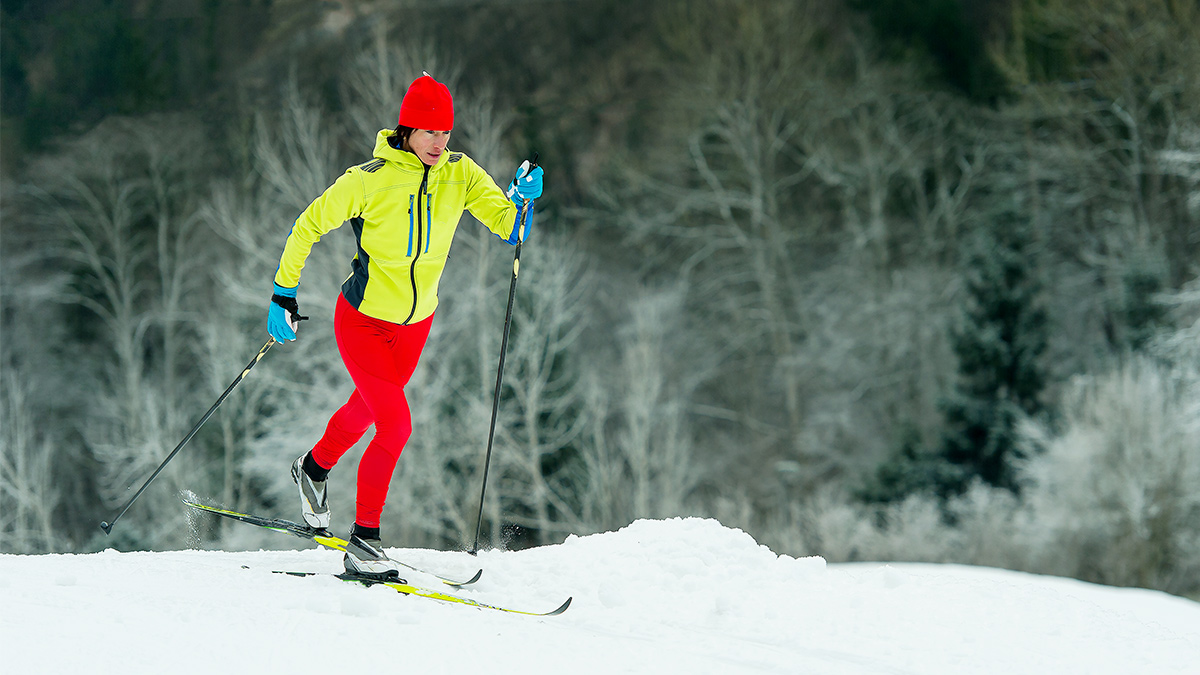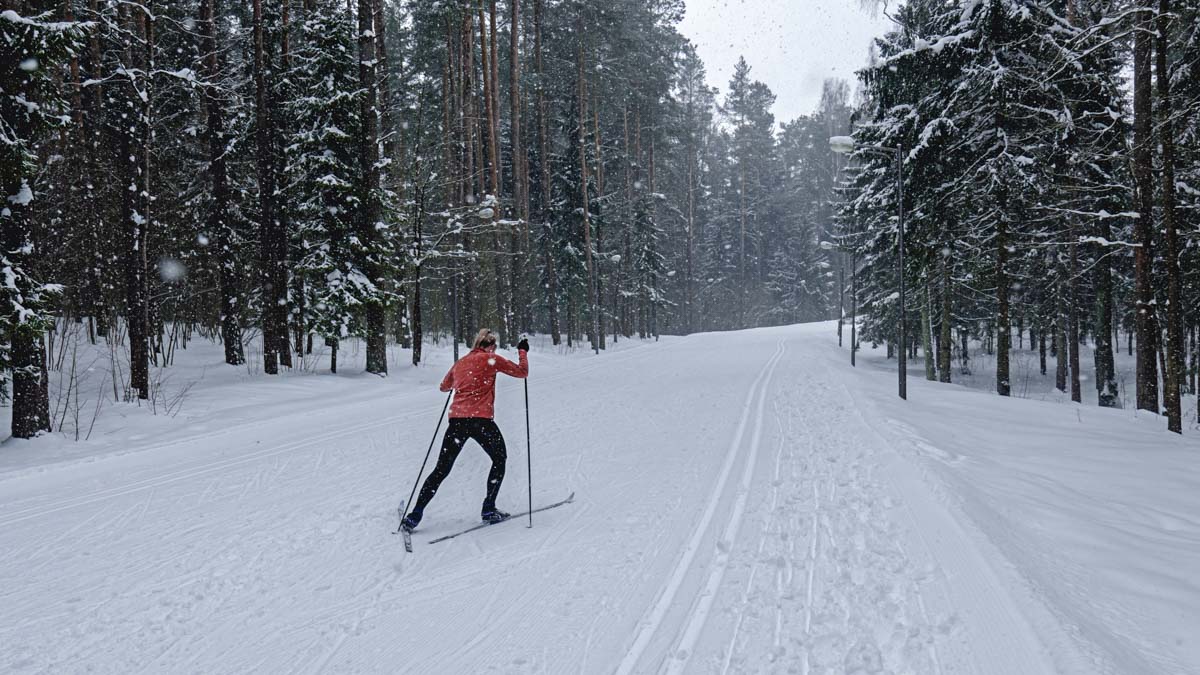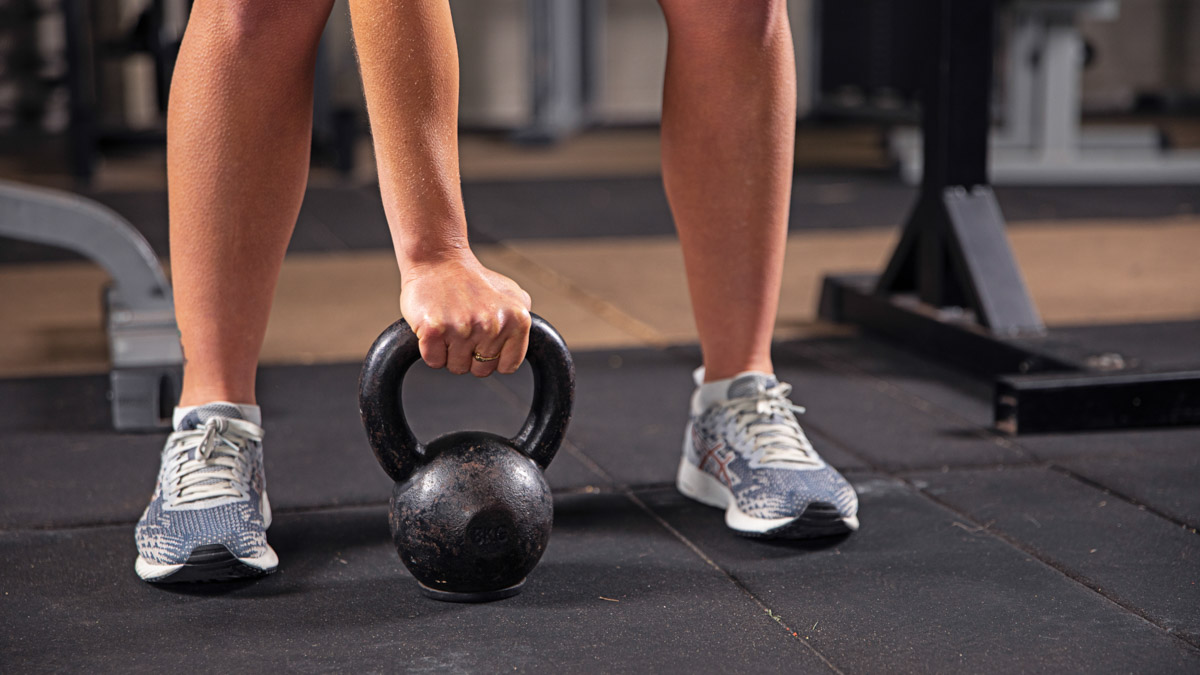“Nordic skiers are made in the summer. It’s cliché, but true,” says Kate Barton Johnson, Head Coach of the U.S. Cross Country Ski Team’s Development squad. Skiers do a lot of training that is not on snow, which means they are often looking for adaptations that can come from other disciplines. This multi-sport mindset creates athletes that are well-rounded, strong, and resilient. Here are three lessons from elite Nordic skiers that all endurance athletes can benefit from.
Nordic Skiers Practice Cross-Training — A Lot
Living in the continental U.S. means professional skiers have limited time on snow. “Some athletes travel to get on snow in late summer, but most won’t touch it again until we head overseas in November. Roller skiing is basically as close to a skiing equivalent as we get,” says Johnson.
With the World Cup circuit beginning in late November, skiers need to be prepared to race not long before they touch snow for the first time in the season. Because of this, professionals work on roller skis closer to the season when they can develop movement patterns and strength they will need to perform optimally. Otherwise, they use other demanding sports like running, cycling, hiking with poles, rowing, and swimming to build strength, fitness, and agility that crosses over to their primary sport.
“Nordic is a cool sport because you can train in so many different modes,” Johnson explains, “Your heart and lungs don’t know if you’re running, skateboarding, playing tennis, or skiing… If someone really likes mountain biking, then we encourage them to fit it in. When you’re putting in close to 1000 hours of training a year, there needs to be diversity, both physically and mentally.”
Training Tip
A wide variety of activities can contribute to the base you will need heading into your racing season, so mix up your training modes. However, when you’re getting closer to race season, start narrowing your focus to your sport-type. If you’re learning to ski, try to get time working on your technique on snow, or with roller skis.
Strength Training is a Regular Part of Their Training Program
Johnson says there are a lot of different viewpoints on strength training. Generally, the strength specialists for the U.S. Team prescribe a mixture of heavyweight power development and more endurance-based circuit training — and most programs combine the two. Circuits include both demanding weight work and cardiovascular activity like sprinting.
“The other thing that’s become much more popular is ski-specific training on roller skis, where athletes are doing only arms or legs in repetitions, often within a distance workout,” says Johnson.
Notably, Johnson points out that athletes need to be able to move properly before they can lift heavy weights, so a significant foundation must be developed first. “You don’t just start throwing around the heavy weights,” she says.
Training Tip
Strength training is important, but don’t jump into lifting heavy weights without learning proper form and movement patterns. Also, recognize that specific strength and endurance can come from working on your specific sport. Combining weights and cardiovascular exercise also has benefits.
Keeping a Training Log is a Priority
Johnson was a psychology major in college, and while understanding the intricacies of physical preparation is a big part of her job, she’s come to realize the mental side of being an athlete is also very important.
One tool for monitoring the blend of both physical and mental fitness is a training log. “As a team, we have a partnership with the Oura Ring, so some athletes use that to help monitor sleep and stress. But the key is that athletes use their logs to record subjective responses along with data.” This can include perceived exertion for workouts, or RPE in the TrainingPeaks app.
Johnson notes that heart rate monitoring is ubiquitous on the team, and the athletes understand how to use that data to monitor their own recovery. “All of the technology is really cool and there isn’t always a right or wrong answer. Rather, it’s all about learning more about yourself and how you handle things over time,” she says.
Training Tip
Keeping a training log, like in your TrainingPeaks app, offers an easy way to record both subjective and objective data. Note that the success of a log comes from your ability to understand how your physical and mental responses to training enhance your overall athletic development. Monitoring your heart rate, sleep, and diet — and recognizing the link between your emotions and training — can help you become your best.
Nordic skiers are some of the fittest athletes on the planet. Whether you are a skier or another type of endurance athlete, incorporating some basic lessons from the U.S. Nordic ski team might help you become a fitter, faster, and overall happier athlete.









